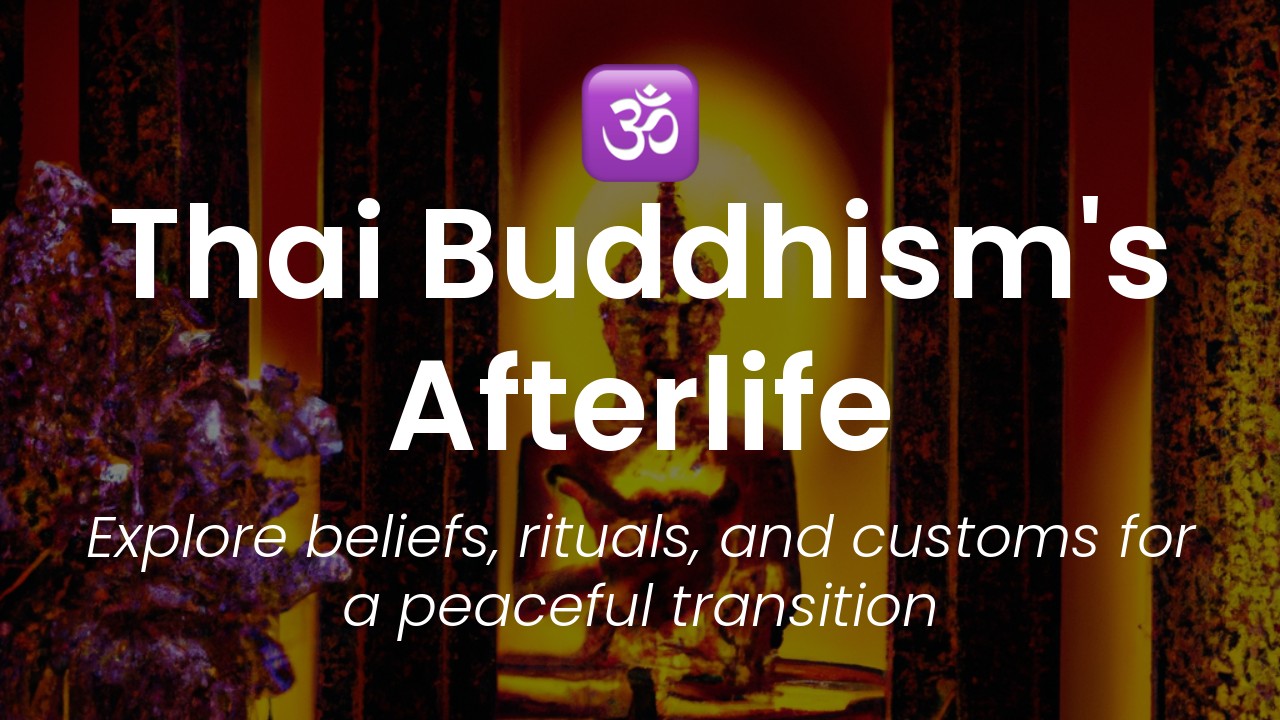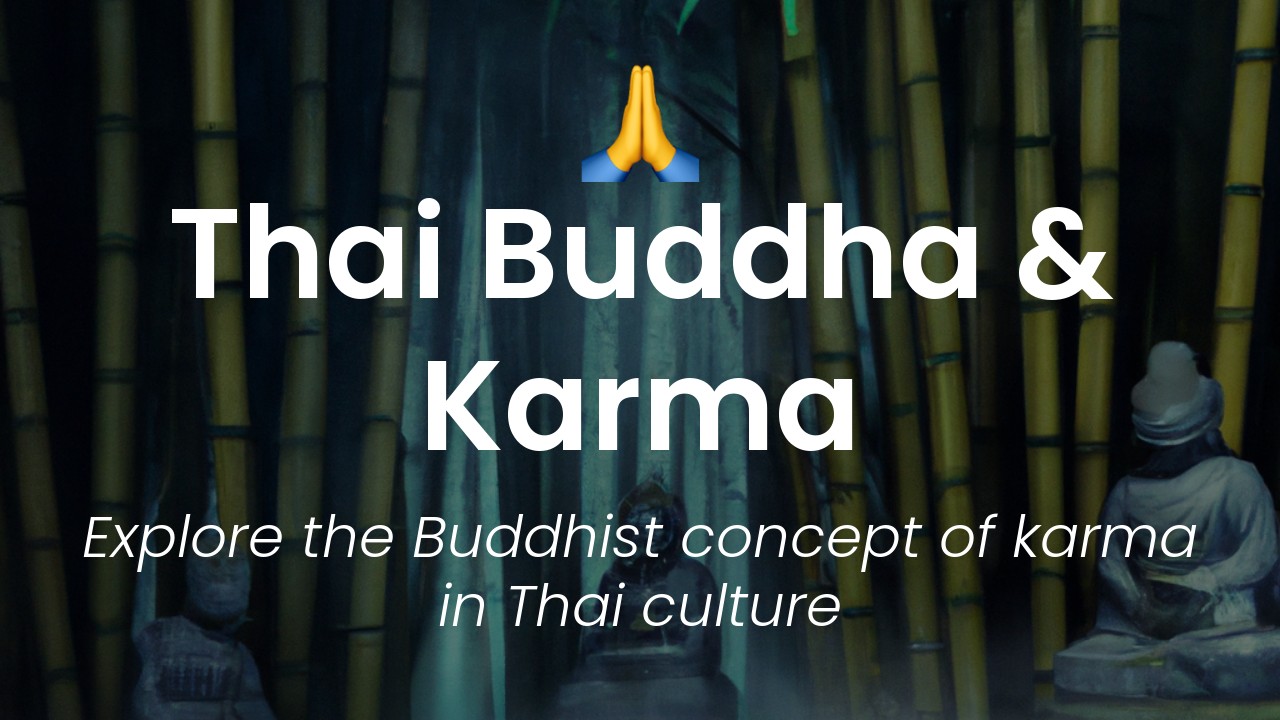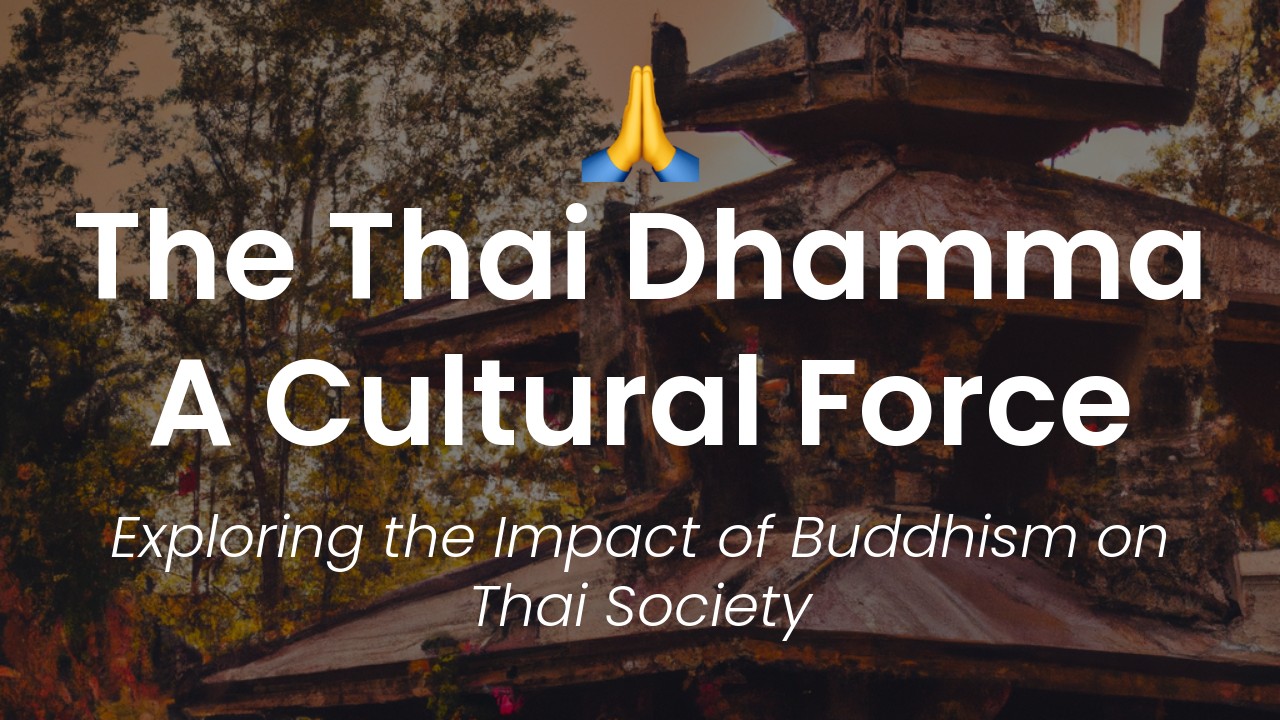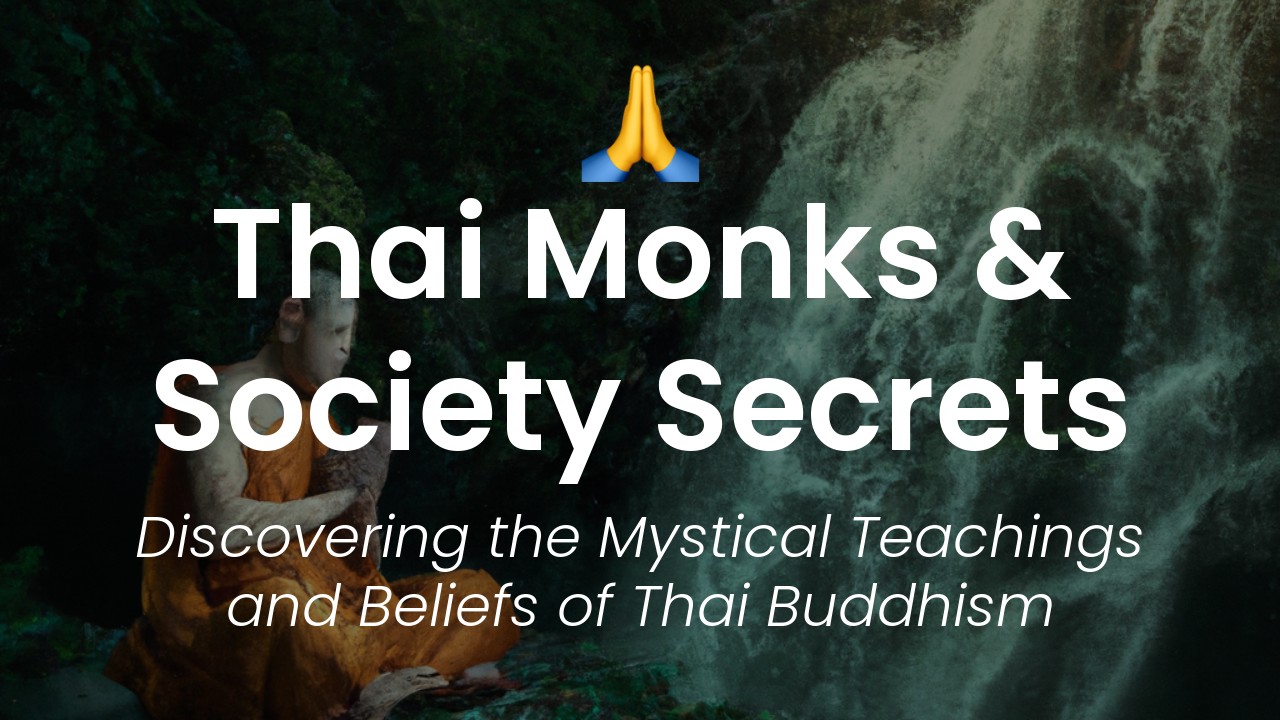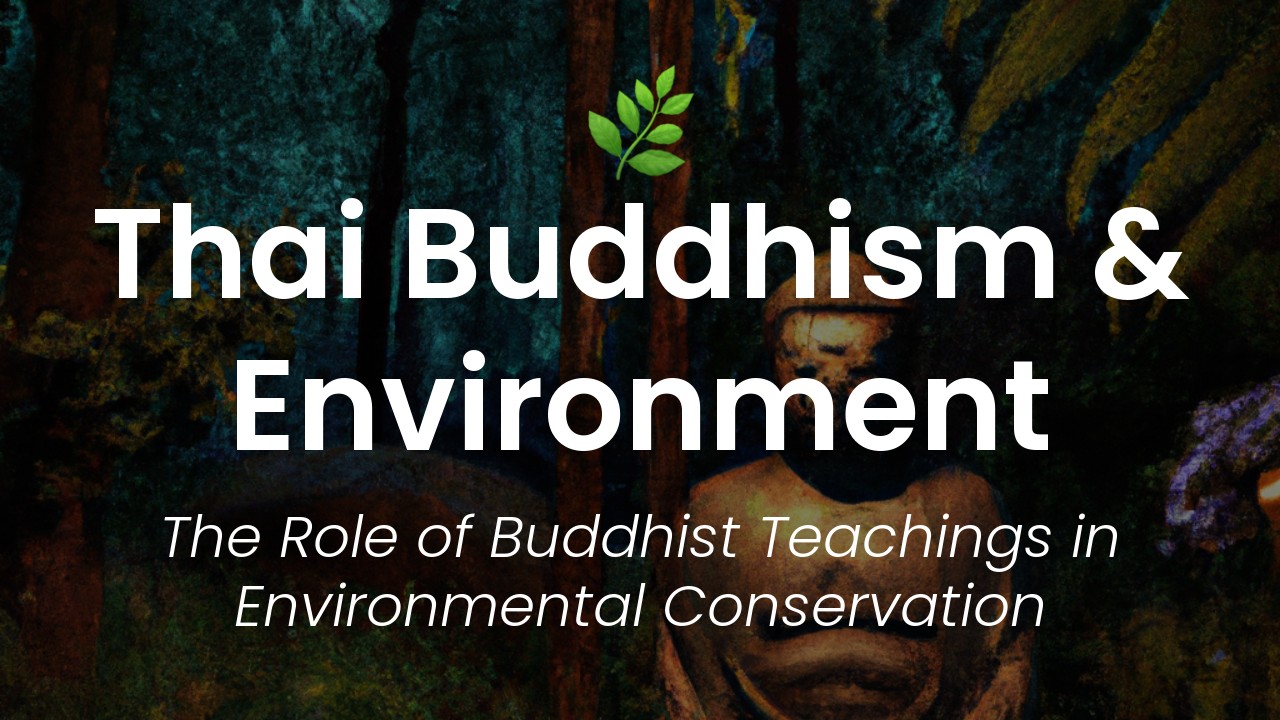As a Thai native and someone who has always had a deep interest in the traditional beliefs and practices of my country, I've been fortunate enough to learn about one of the most profound teachings of Thai Forest Tradition. This teaching is centered on the profound connection between nature and the human experience, and it has been passed down through the Thai forest monk tradition for centuries.
While some people may be aware of Thai forest tradition, far fewer know of the insights it offers about the delicate balance of life in nature. A philosophy that promotes mindfulness of the self, one's surroundings and all living creatures, Thai forest tradition is a belief system that is intricately woven into the fabric of rural Thailand's countryside.
Through years of study, observation and experience, I have come to appreciate this unique way of life, and how it can benefit people in today's world. In this blog post, I want to share with you the three fundamental principles of Thai forest tradition teachings and how they can be applied to our daily lives. By unlocking the secrets of this ancient wisdom, we can gain a deeper understanding of ourselves, the natural world around us and our connection to both.
What is Thai Forest Tradition?
Thai Forest Tradition is a form of Theravada Buddhism practiced primarily in Thailand and other Southeast Asian countries. It is known for its emphasis on mindfulness, meditation, and living in harmony with nature. The tradition takes inspiration from the early Buddhist monastic practices found in the Pāli Canon, and also incorporates teachings from other Buddhist schools.
Monks and nuns who practice the Thai Forest Tradition live in forests or remote areas away from cities and towns. They are often referred to as "forest monks" or “Dhammācārī". This allows them to lead a more simple and austere lifestyle that is closer to the teachings of the Buddha.
History of the Tradition
The Thai Forest Tradition was first developed in the 20th century by a monk named Ajahn Mun Bhuridatta. He was known for his strict adherence to the monastic rules, which he felt had been diluted over time. His teachings inspired a group of disciples including Ajahn Chah and Ajahn Sumedho, who went on to become influential teachers in their own right.
Ajahn Chah established Wat Nong Pah Pong, the first forest monastery, in the 1950s. This was followed by the founding of other forest monasteries, including Wat Pa Nanachat, which was established for Western disciples. Ajahn Sumedho also founded monasteries in the West, including the Amaravati Buddhist Monastery in England.
Key Teachings of the Tradition
The Thai Forest Tradition teaches that the path to enlightenment or "nirvana" can be achieved through the practice of mindfulness and meditation. These practices help to cultivate wisdom, which is one of the three core components of Buddhist teaching. The other two components are ethics and concentration.
According to the Thai Forest Tradition, mindfulness means being aware of the present moment and accepting it without judgment. This helps to reduce anxiety and stress, and allows practitioners to enter a state of calm and clarity. Meditation, on the other hand, involves focused concentration on an object or sensation, such as the breath or a sound. This helps improve concentration and focus, and can lead to deeper insights about the nature of reality.
The Thai Forest Tradition also places great emphasis on ethical conduct, which is seen as a foundation for the development of wisdom and concentration. Practitioners are expected to adhere to the Five Precepts, which include refraining from harming living beings, stealing, sexual misconduct, lying, and intoxicants.
Meditation Techniques in Forest Tradition
The Thai Forest Tradition teaches a variety of meditation techniques, including mindfulness of breathing, loving kindness (metta) meditation, and walking meditation. These techniques are aimed at developing concentration, wisdom, and compassion.
Mindfulness of breathing involves focusing the mind on the sensations of the breath as it enters and leaves the body. Practitioners learn to observe the breath without getting caught up in thoughts or distractions, which helps to develop concentration and calmness.
Loving kindness meditation involves cultivating feelings of loving kindness towards oneself and others. This helps to develop compassion and a sense of connection with others.
Walking meditation involves walking back and forth along a path, while maintaining focused awareness of the sensations in the body and the environment. This helps to improve concentration and mindfulness, and can be helpful for people who find it difficult to sit still for long periods of time.
Integration with Modern Life
While the Thai Forest Tradition places emphasis on living a monastic lifestyle, it also recognizes the importance of adapting the teachings to modern life. Many forest monasteries offer meditation retreats for laypeople, and some monks and nuns travel to cities to offer teachings and guidance.
The Thai Forest Tradition also encourages practitioners to cultivate mindfulness and ethical conduct in their everyday lives, whether they are monks or laypeople. This can involve incorporating mindfulness practices into daily routines, such as walking, eating, and working, and making an effort to live in a way that is mindful and compassionate towards oneself and others.
Masters and Disciples of Thai Forest Tradition
The Thai Forest Tradition has produced many influential teachers, both in Thailand and the West. Some of the most well-known masters include Ajahn Chah, Ajahn Sumedho, and Ajahn Brahm. These teachers have established monasteries and meditation centers around the world, and their teachings are widely respected and studied.
There are also many Western disciples of the Thai Forest Tradition who have become respected teachers in their own right. These include Bhikkhu Analayo, a German-born monk who has written extensively on Buddhist meditation, and Ajahn Sucitto, a British monk who has written several books on mindfulness and insight meditation.
How to Learn More About Thai Forest Tradition?
If you are interested in learning more about the Thai Forest Tradition, there are many books, websites, and meditation centers that can provide information and guidance. Some popular books include "The Mindful Path to Self-Compassion" by Christopher Germundsen, "Bamboo in the Wind" by Ajahn Brahm, and "The Heart of Buddhist Meditation" by Nyanaponika Thera.
There are also many meditation centers that offer retreats and teachings in the Thai Forest Tradition. Some popular centers include Wat Nong Pah Pong and Wat Pah Nanachat in Thailand, and the Insight Meditation Society and Amaravati Buddhist Monastery in the West.
Conclusion
The Thai Forest Tradition is a rich and vibrant form of Buddhist practice that emphasizes mindfulness, meditation, and ethical conduct. Its teachings have inspired many practitioners around the world, and have helped people to find greater peace and happiness in their lives. Whether you are a seasoned practitioner or a newcomer to Buddhism, there is much to learn and explore in the teachings of the Thai Forest Tradition.


